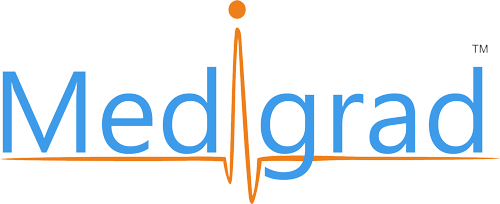
For many MBBS graduates considering their next step, pursuing a Fellowship in Cardiology can be a game-changer. But is it truly worth the investment? In this blog, we’ll explore three critical facets—Return on Investment (ROI), job prospects, and global recognition—beyond surface-level benefits, to help you make an informed decision.
1. Expected Return on Investment (ROI) from Fellowship in Cardiology
(i) How much does a cardiology fellowship really cost—time and money?
Typically lasting 12 to 24 months, a cardiology fellowship demands commitment both in finances and personal bandwidth. In India, tuition can range from ₹1 lakh to ₹5 lakh, depending on the institution. Add living expenses and opportunity costs—the income you could’ve earned if you continued practicing as a general physician—and the total investment might reach around ₹15–₹20 lakh.
(ii) What’s the earning potential afterwards?
A fellowship greatly enhances your earning potential. In India:
- Early-career cardiologists, including those with fellowship training, earn ₹10–25 LPA.
- Subspecialists like interventional cardiologists can reach ₹20–60 LPA or more
- So, in just a couple of years, you often break even—and then some.
Read More: Explore the benefits of a fellowship in Cardiology- Medigrad.
(iii) What’s the timeline to see a financial return?
Assuming a 1-year fellowship costing ₹1 lakh, and a jump in annual base salary from ₹8 LPA to ₹15 LPA post-fellowship, breakeven is within the first 18–24 months post-training. Add faster career progression, and your long-term financial outlook improves significantly.
2. Job Opportunities Post-Completion of Cardiology Fellowship
(i) What job roles can you qualify for post Fellowship in Cardiology?
A fellowship in cardiology opens doors to several roles:
- Consultant or associate cardiologist in public and private hospitals
- Subspecialist positions in interventional, electrophysiology, non-invasive, or pediatric cardiology
- Academic and teaching roles in medical colleges
- Clinical research, medical device consulting, or pharma.
(ii) Is India’s cardiology sector growing?
The need for cardiologists in India is stark. A 2017 Indian Express report discovered 552 of 1,907 super-specialty seats were vacant, with only 55 in cardiology. The estimated shortage? About 84,000 cardiologists, while India has only 4,000 serving a population of 1.4 billion.
(iii) What do doctors report about work-life balance?
Online discussions highlight that fellowship programs are designed to complement ongoing clinical practice, making them manageable even for working doctors. While certain super-specialties like interventional cardiology may involve more rigorous training, most fellowship programs offer flexible learning formats. Many doctors find the experience enriching and professionally rewarding, as it opens doors to better career opportunities and higher income potential—without significantly disrupting their current work-life balance.
3. Global Recognition and Career Mobility
(i) Are cardiology fellowships internationally recognized?
Yes — particularly those offered by esteemed institutions such as Medigrad, which holds international accreditation from the CPD Standards Office, UK. This certification affirms that Medigrad’s fellowship programs, including the Fellowship in Cardiology, adhere to globally recognized standards for professional education and continuous development.
A fellowship from Medigrad not only advances your clinical skills but also enhances your professional credibility on an international scale, positioning you competitively within global healthcare systems. Graduates of CPD-accredited programs are acknowledged for their commitment to evidence-based learning, skill enhancement, and adherence to ethical medical practice.
(ii) Can you work abroad after completing a fellowship in cardiology?
Absolutely — with certain caveats:
- US/Canada/Australia: May require additional exams and credential verification.
- UAE/Middle East/UK/Canada: Fellowship-trained cardiologists are in demand; having formal credentials helps.
- ESC “International FESC” programs offer prestige and global recognition.
- (iii) How does global recognition translate locally?
Globally recognized fellowships elevate your standing in India:
- Greater trust among patients
- Preference from top-tier hospitals
- Higher pay packages
- Opportunities in telemedicine, medical writing, and entrepreneurship
4. Real-Life Challenges of a Cardiology Fellowship?
(i) How intense is the training?
The 12-month Fellowship in Cardiology is designed to be academically rigorous yet manageable for MBBS graduates. Unlike DM or DNB programs, it does not demand 70–100-hour weeks or frequent overnight calls.
The structure focuses more on skill enhancement, case-based learning, and practical exposure under expert supervision. While a certain level of dedication and discipline is required, the workload is well-balanced to support continuous learning without excessive burnout.
(ii) What are the challenges to consider?
This is a focused program, so depth of exposure may vary depending on the institution and clinical setup.
- The fellowship does not replace formal DM/DNB training but is ideal for those seeking specialization and practical cardiology experience without a long-term academic commitment.
- Career progression may require further education or certifications depending on your long-term goals and desired practice setting.
(iii) Is burnout a concern?
Burnout risk is relatively low in a one-year structured fellowship like this. Fellows are mentored by experienced cardiologists, and the program is designed to foster professional development in a supportive environment. Most participants report the experience as enriching and rewarding, especially in terms of confidence-building and practical exposure.
5. How Does Fellowship Compare to Traditional Cardiology Residencies (DM/DNB)?
The pathways to building a career in cardiology differ significantly in terms of structure, duration, eligibility, and long-term outcomes. Here’s a clear comparison:
| Criteria | Fellowship in Cardiology (Post-MBBS) | DM/DNB in Cardiology (Post-MD) |
| Eligibility | MBBS | MD/DNB in Internal Medicine |
| Duration | 12 months | 3 years (after 3-year MD) |
| Objective | Skill development and foundational exposure in cardiology | Super-specialization with in-depth training |
| Structure | Part-time or structured clinical training with blended learning | Full-time residency with extensive clinical and procedural exposure |
| Focus Areas | Non-invasive cardiology, ECG, echocardiography, case management | Invasive and non-invasive cardiology, interventional procedures, advanced diagnostics |
| Career Scope | Entry-level cardiology roles, general practice, primary healthcare, rural/telemedicine setups | Consultant cardiologist, interventional cardiologist, academic and leadership roles in tertiary care |
| Competitiveness | Moderate – fewer entrance barriers | Highly competitive national-level exams |
| Recognition | Adds practical value and credibility; varies based on the institution | Official super-specialty degree recognized by MCI/NMC and globally respected |
(i) What’s the difference in opportunities?
A Fellowship in Cardiology post-MBBS is ideal for medical graduates seeking early exposure and hands-on experience in cardiology without committing to a 6-year super-specialty pathway. It equips you with practical skills, boosts clinical confidence, and strengthens your profile for future specialization or private practice.
In contrast, DM/DNB in Cardiology is a long-term, highly competitive academic route that leads to advanced and highly specialized cardiology careers.
Both pathways serve different professional goals. Choosing the right one depends on your career vision, timeline, and readiness for intensive training.
6. Is a Cardiology Fellowship Worth It? Final Verdict
A cardiology fellowship demands time, money, and energy—but rewards physicians with:
- Strong ROI through enhanced earning potential
- Diverse job opportunities across clinical, academic, research, and global roles
- Global credibility via recognized credentials and international society memberships
That said, this path might not be for everyone. If you’re seeking a balanced lifestyle with less procedural pressure, consider:
- Becoming a general cardiologist
- Exploring non-invasive cardiology fellowships
- Combining echocardiography with internal medicine or diabetology
7. What Should You Ask When Considering a Fellowship?
- Is the program accredited by national bodies or internationally recognized?
- What mentorship and career support are available?
- Are there global fellowships or exchange opportunities?
- What are placement and salary statistics for alumni?
The answers to these questions will determine if the fellowship aligns with your career goals—be it clinical excellence, research impact, or global practice.
8. Final Thoughts: Should You Take the Leap?
If you’re passionate about cardiology, committed to lifelong learning, and willing to invest in your future—then yes, a fellowship in cardiology is absolutely worth it. Beyond mastery, it opens doors to leadership, innovation, and higher earning potential.
If you prioritize work-life balance or prefer a generalist role, another path may suit you better. But for those drawn to cardiovascular medicine, a focused fellowship can truly shape you into an expert—ready to lead in India or abroad.
Bottom Line:
A Fellowship in Cardiology is more than just a credential—it’s a career multiplier. With significant ROI, diverse job opportunities, and growing global recognition, it’s a path worth serious consideration for MBBS graduates aiming to make their mark in heart care.
